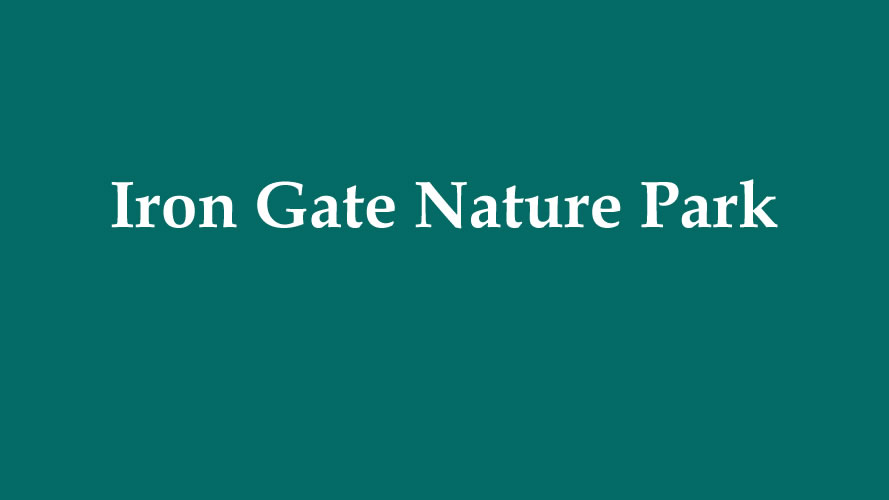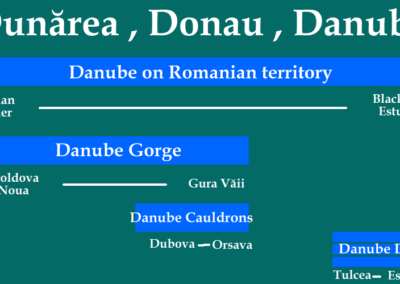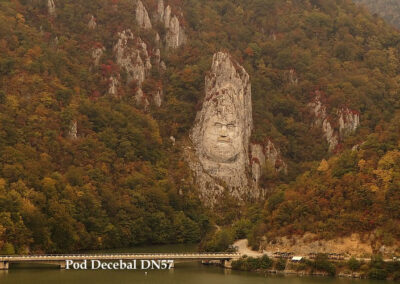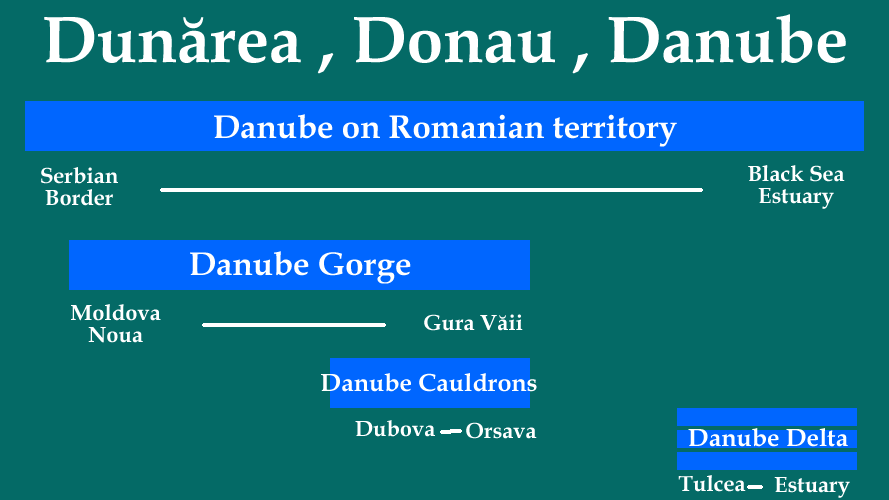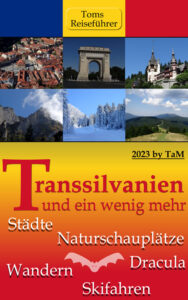The so-called Iron Gate Nature Park (Parcul Natural Porțile de Fier) in Romania is a great nature reserve with spectacular sights and fantastic natural beauty along the course of the lower Danube River. On a stretch of about 140 kilometers between the Romanian towns of Moldova Nouă and Gura Vaii, which is also called the Danube Gorge, you will experience pure nature. However, the territory of the Iron Gate Natural Park (Parcul Natural Porțile de Fier) covers more than 1200 square kilometers, where you can discover numerous natural beauties and sights. Here you will find vertical limestone walls that seem to rise from the waters of the Danube, caves and magnificent forests that are home to numerous animals. Within the park there are also smaller protected areas.
Iron Gate Nature Park
One, if not the main attraction of the nature park is the 9-kilometer-long Danube Cauldron (Cazanele Dunării), in the area of which is also the stone-carved 55-meter-high statue of Debaculus, as well as the Mraconia Monastery, located on the banks of the Danube. Another tourist attraction is the Ponicova Cave, which is the largest cave in the gorge at over 1600 meters, and can be reached both by boat and by land.Man-made are the dam of the hydroelectric power plant (Iron Gate I), which is located on the eastern edge of the nature park. Each section of the Danube Gorge has its own peculiarities and offers unique sights and activities.
Iron Gate Nature Park
The Iron Gate Nature Park also offers numerous hiking trails that will take you to places with fantastic views of the Danube. One of the most popular ways to explore or view the banks of the Danube is, however, boat trips on the Danube, which depart from various piers along the Danube. As already mentioned, the 9-kilometer-long Danube Basin (Cazanele Dunării) is one of the most magnificent stretches of the Danube in Romania, which you can experience, for example, during a boat trip departing from the town of Orsava or Drobeta Turnu Severin, among others. The Iron Gate Nature Park is also home to Romania’s largest hydroelectric power plant, whose dam walls you can visit.
You can reach the Iron Gate Nature Park in different ways. As already mentioned, by boat via the ports of Orsova or Moldova Noua, as well as moorings in Drencova or Svinita. By car you can reach the towns of Orsava and Drobeta-Turnu Severin via the national road E70. The national road DN57 connects Orasava as well as the town of Moldova Noua and offers numerous opportunities to stop between them to explore the nature park. Those who come by train can get to the Iron Gate Nature Park via the stations of the towns of Orsava and Drobeta-Turnu Severin.
There are numerous hiking trails within the Iron Gate Nature Park.
Trescovăț Ecotourism Trail (Traseul Ecoturistic Trescovăţ).
Route from Svinița > Stariște Tourist Stop to Trescovăț Gorge.
Marking : Red triangle on white background
Length : approx. 10 km, walking time approx. 6 hours
Difficulty : medium
Ecotourism path of the small cauldrons (Traseul turistic Ciucaru Mic)
Route from Dubova Bay to Ciucaru Mic viewpoint
Marking : Red triangle on white background
Length : about 2 km, walking time about 1 hour
Difficulty : medium
Alion Ecotourism Trail
Route from the Danube bridge E70 – to the top of Alion hill
Marking : Yellow triangle on white background
Length : 4,5 km, walking time about 2,30 hours
Difficulty : medium
Tourist Route St. Peter’s Cross (Traseul turistic Crucea Sf. Petru)
Route from the railroad bridge in Gura Văii to St. Peter’s Cross
Marking : blue stripe on a white background
Length : 6,6 km, walking time about 3 hours
Difficulty : medium
You can find many other trails and information on the website of the nature park:https://www.pnportiledefier.ro/trasee.html

